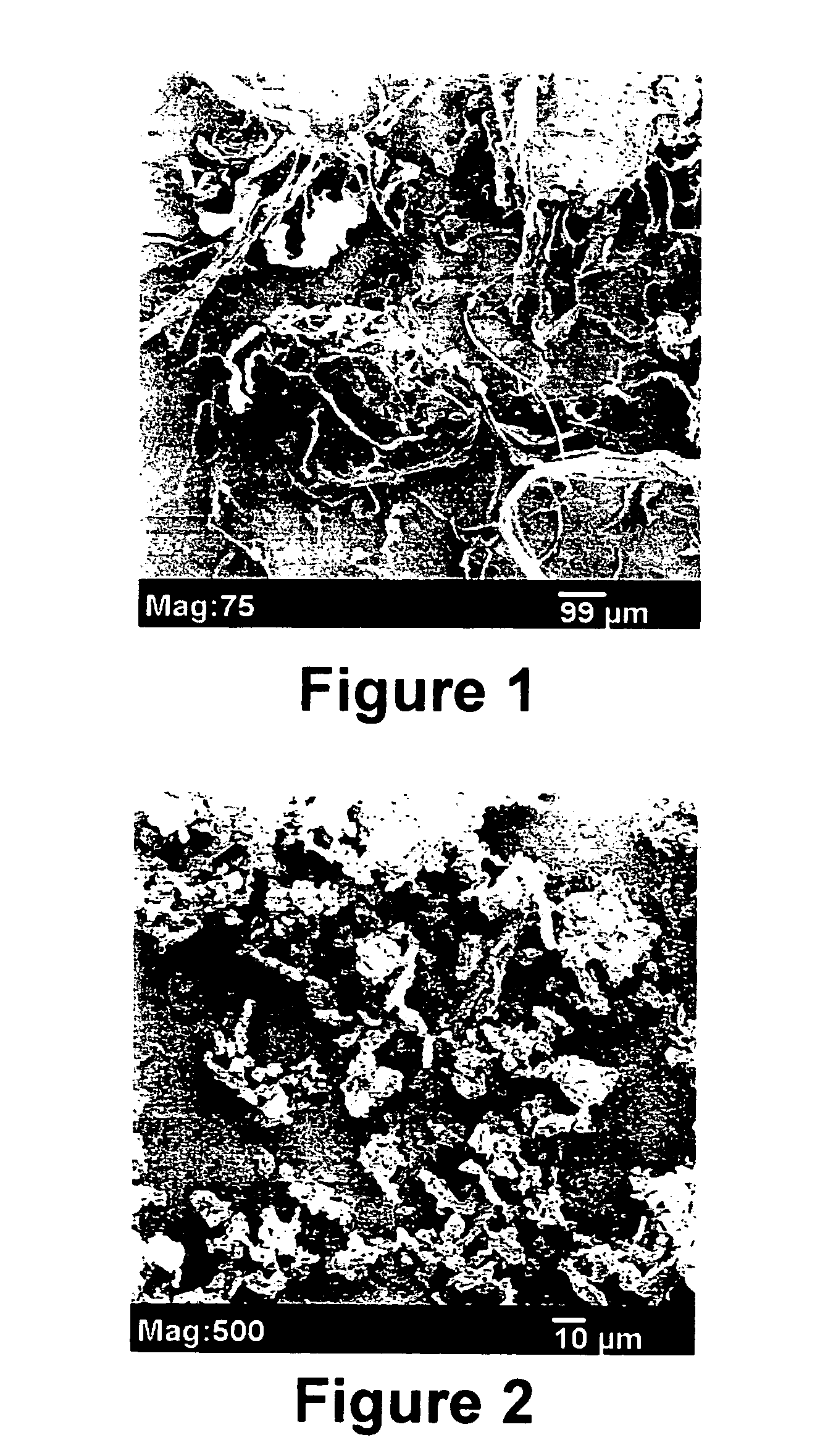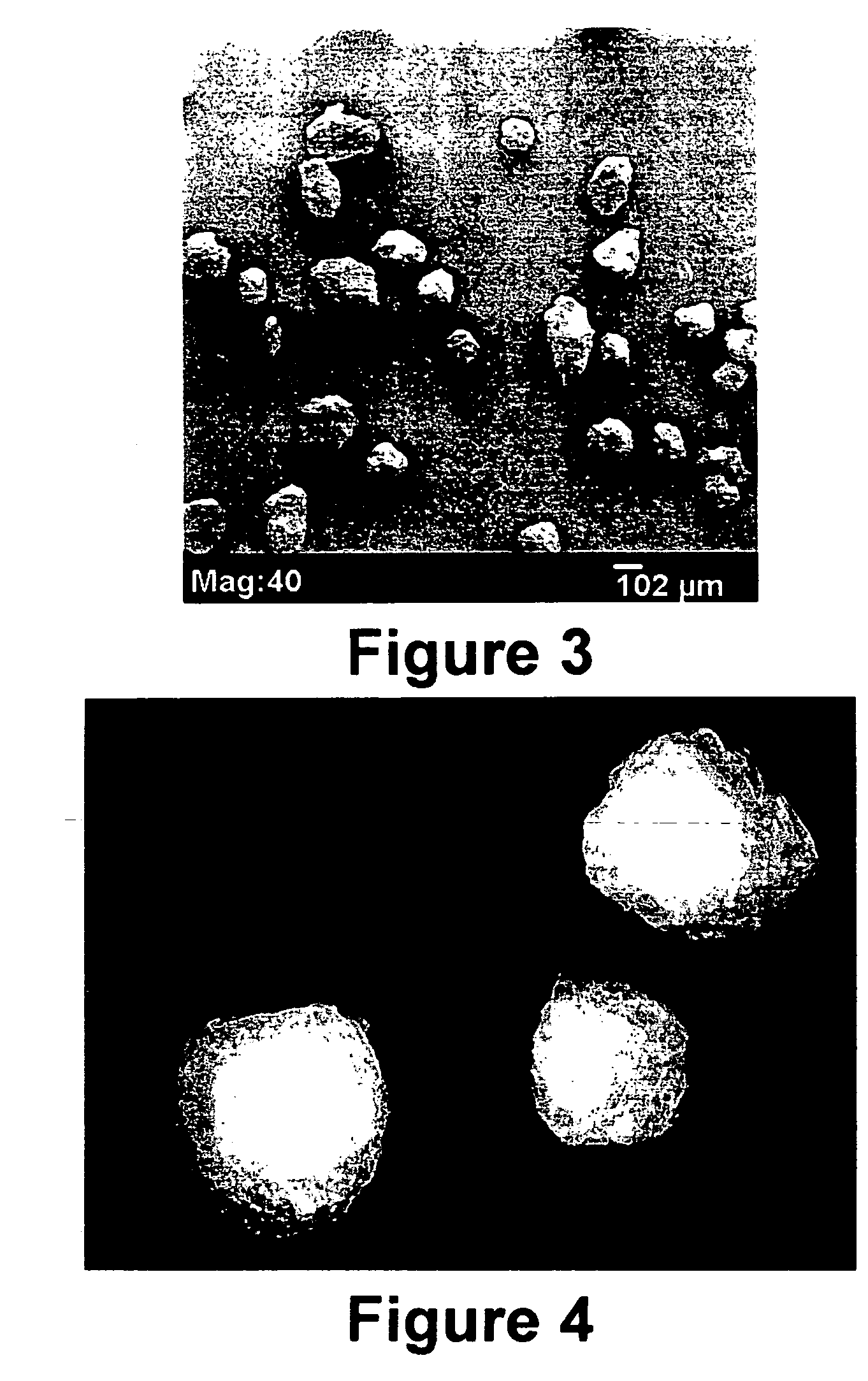Flowable bone grafts
- Summary
- Abstract
- Description
- Claims
- Application Information
AI Technical Summary
Problems solved by technology
Method used
Image
Examples
example 1
Roto-Milled Healos
[0045] A porous, three-dimensional bone graft formed from mineralized collagen fibrils, sold under the tradename HEALOS (DePuy Spine, Inc., Mountain View, Calif.), was cut to smaller pieces of roughly 0.5 cm×2 cm and the pieces fed into a rotor-mill (Wiley Mini-Mill model 3383-L10, Thomas Scientific, Swedesboro, N.J.) fitted with a US Std. #20 mesh (Thomas Scientific, Swedesboro, N.J.). FIG. 1 shows a scanning electron micrograph of the roto-milled, irregularly shaped mineralized collagen particles comprising bound mineralized collagen fibrils.
example 2
Cryogenically-Milled Mineralized Collagen Fibrils
[0046] Mineralized collagen fibrils as described in Constantz were cut into smaller pieces and micronized with a 6800 Freezer Mill (SPEX CertiPrep, Metuchen, N.J.). The freeze / mill cycle consisted of a 20-minute initial cooling period followed by 10 cycles of 2 minutes milling and 2 minutes cooling between each milling cycle with an impact setting of 12. FIG. 2 shows a scanning electron micrograph of cryo-milled mineralized collagen fibrils.
example 3
Cryo-Milled Mineralized Collagen Fibrils Bound with Denatured Collagen
[0047] One gram of water-soluble collagen was added into 10 ml of deionized water. The solution was heated to 80° C. until the collagen was totally dissolved. The solution was cooled to and maintained at 40° C. The pH of the solution was adjusted to 7.4 using 1N NaOH. 150 milligrams of cryo-milled, mineralized collagen fibrils as show in FIG. 2 were suspended in 3 ml of the denatured collagen solution and vortexed. 3 ml of the slurry so formed was poured into 60 ml of olive oil maintained at 40° C. under stirring at 400 rpm to form agglomerates of fibrils coated with denatured collagen. Stirring was continued for 10 minutes. The solution was transferred into an ice bath and stirred for 15 minutes at 200 rpm. 400 ml of cold acetone was added into the solution while the solution still was in the ice bath. The solution was kept in the ice bath for 40 minutes. Coated agglomerates were collected by filtration. Coated ...
PUM
| Property | Measurement | Unit |
|---|---|---|
| Percent by mass | aaaaa | aaaaa |
| Percent by mass | aaaaa | aaaaa |
| Percent by mass | aaaaa | aaaaa |
Abstract
Description
Claims
Application Information
 Login to View More
Login to View More - R&D
- Intellectual Property
- Life Sciences
- Materials
- Tech Scout
- Unparalleled Data Quality
- Higher Quality Content
- 60% Fewer Hallucinations
Browse by: Latest US Patents, China's latest patents, Technical Efficacy Thesaurus, Application Domain, Technology Topic, Popular Technical Reports.
© 2025 PatSnap. All rights reserved.Legal|Privacy policy|Modern Slavery Act Transparency Statement|Sitemap|About US| Contact US: help@patsnap.com


